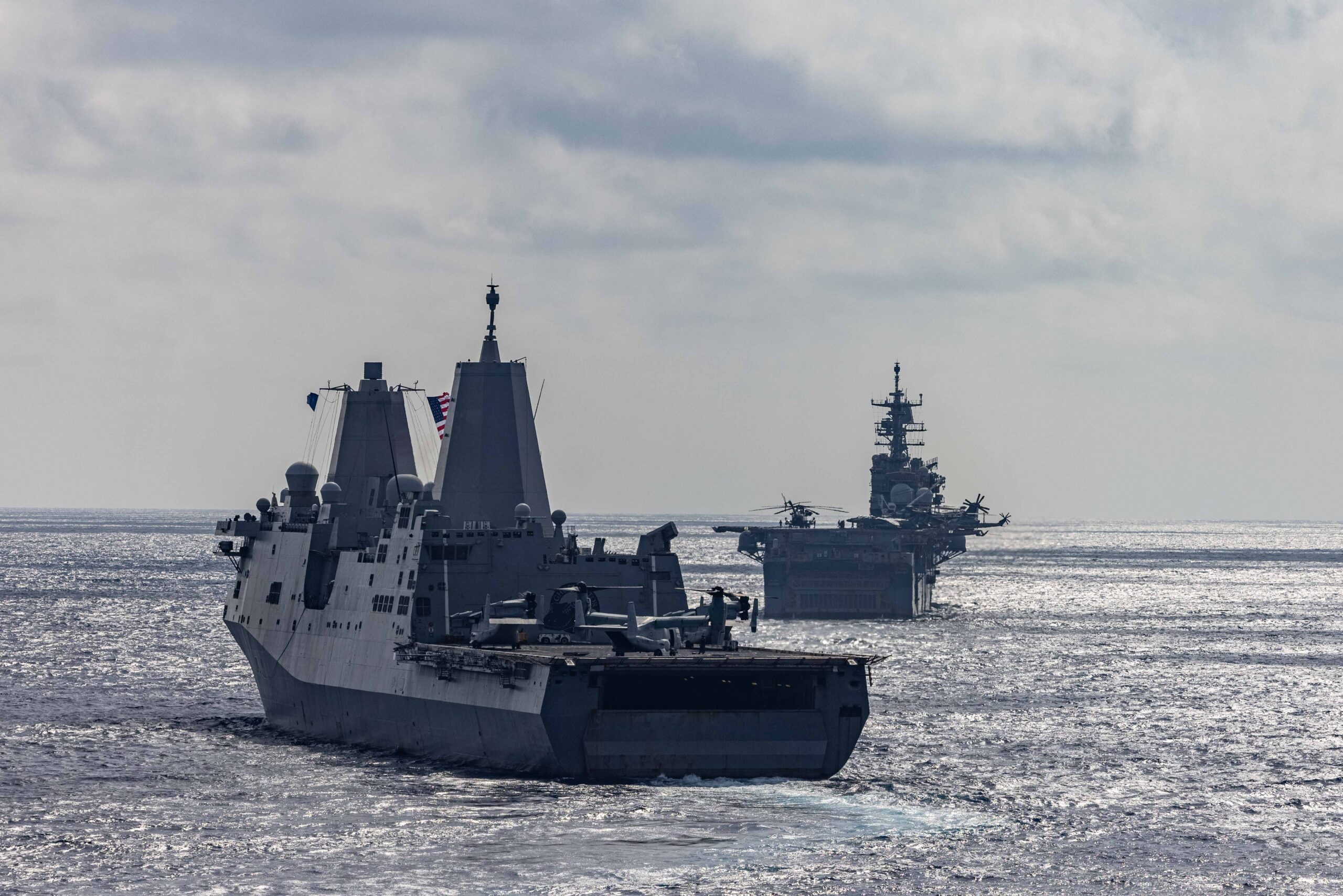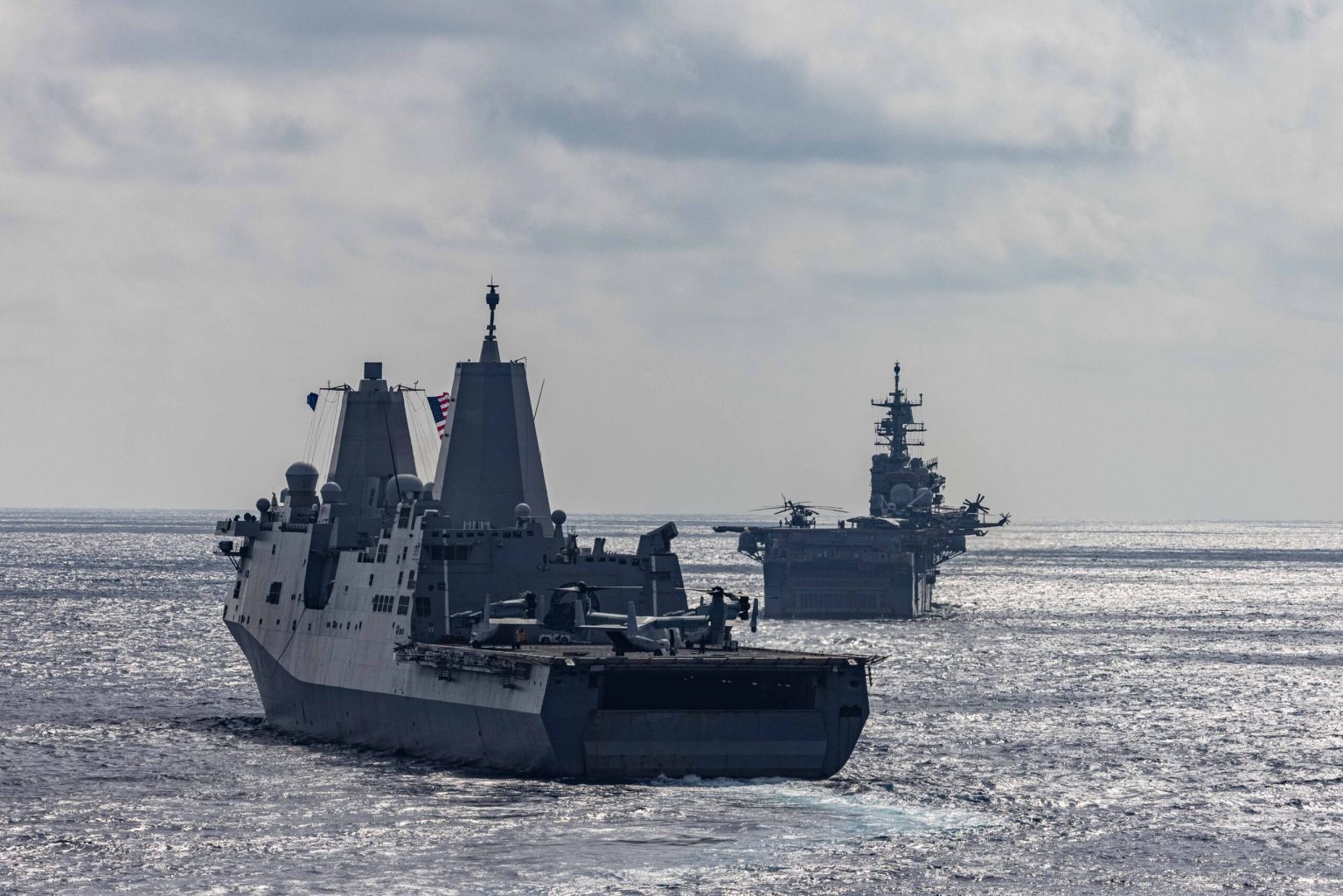The U.S. Navy shipbuilding strategy is once again a first-order question of national power. In 1937, Washington embraced a long-range plan that seeded wartime victory; in 2025, lawmakers face a similar inflection point as near‑peer naval competition accelerates across the Indo‑Pacific and Arctic. The case for a new long‑range framework is not nostalgia—it is a practical blueprint to align strategy, budgets, and industrial capacity for the 2030s and beyond [1].
Policy analyst Austin Wu argues that the original pre‑war approach integrated maritime strategy with industrial policy, commercial shipping, and sealift—an ecosystem logic the U.S. partially abandoned after the Cold War. Reinstating that discipline would give the U.S. Navy shipbuilding strategy the predictability that large yards, tier‑2/3 suppliers, and a shrinking skilled workforce need to invest and scale [1].

Key Facts
• The Navy’s FY2025 30‑year plan projects a fleet exceeding 300 hulls in the early 2030s and up to ~381 ships in the 2040s [2].
• GAO reports persistent schedule and cost pressure across major programs, including Columbia‑class SSBNs [3].
• Constellation‑class frigates are years behind schedule, reflecting design churn and yard throughput constraints [4][5].
• China’s commercial shipbuilding dominance amplifies military‑industrial asymmetries and supply chain risk [6].
The new era of maritime rivalry
Naval power is being reorganized around three realities: contested logistics, missile‑saturated battlespaces, and industrial endurance. Deterrence now depends on both warfighting concepts—Distributed Maritime Operations and resilient C2—and the staying power of the U.S. Navy shipbuilding strategy to sustain attrition and replenish losses at speed. A credible plan must integrate fleet architecture (DDG(X), SSN(X), frigates, auxiliaries), unmanned systems, and at‑sea logistics with a modernized shipyard base and skilled labor pipeline [2][7][8].
Lessons from 1937—industrial policy as strategy
The 1937–38 build‑up paired naval requirements with an explicit national program: standardized designs, multi‑year orders, and a merchant marine mobilization that culminated in the War Shipping Administration. Wu’s reading is simple: a modern “LRSP‑2.0” should synchronize military shipbuilding with commercial yards and sealift, using block buys, predictable demand signals, and targeted financing to compress timelines. This is not mere procurement hygiene; it is the scaffolding of deterrence [1].
Where today’s plans fall short
Industrial base erosion. The Navy’s 30‑year plan charts numerical growth, yet throughput remains the binding constraint. Major programs face cascading delays: the Columbia SSBN program accepted a one‑year slip with added cost exposure, while concurrency and supplier fragility continue to threaten milestones [3]. The Constellation‑class frigate, envisioned as a low‑risk parent‑design adaptation, now carries multi‑year delay and cost growth due to specification changes and design maturity issues [4][5]. These are symptoms of a strategy that promises volume without underwriting the means.
Budget instability. Irregular appropriations and continuing resolutions distort learning curves, raise unit prices, and weaken vendor confidence. CBO’s analysis of the FY2025 plan highlights structural affordability gaps relative to historic outlays, implying chronic pressure on operations and procurement trade‑offs if Congress does not lock in multi‑year mechanisms across combatants and auxiliaries [7][9]. A U.S. Navy shipbuilding strategy that fluctuates annually is not a strategy—it is a wish list.
Strategic ambiguity. Fleet size targets drift while mission priorities proliferate. Clear choices—platform counts, payload volume, survivability standards, and the role of unmanned surface and undersea vehicles—must be encoded into schedules and contracts. Without that clarity, shipyards chase shifting baselines, inventory ages out, and training pipelines lag.
A blueprint for strategic maritime renewal
1) Rebuild shipyard capacity—faster than demand grows
Make shipyard modernization a co‑equal program of record with the fleet. Expand the Navy’s yard‑upgrade efforts into a national initiative that covers dry docks, heavy‑lift, advanced welding and modular assembly lines, and digital twins from keel‑laying to life‑cycle sustainment. Tie government cost‑shares to verifiable cycle‑time reductions and throughput metrics. The U.S. Navy shipbuilding strategy must measure success in ships delivered per year—not PowerPoints produced.
Exploit commercial capacity where it exists. China’s edge stems from commercial scale feeding military yards. While the U.S. cannot replicate that overnight, targeted use of commercial fabrication for non‑sensitive modules, auxiliaries, and sealift hulls can alleviate bottlenecks and rebuild a maritime supplier commons [6].
2) Scale a skilled maritime workforce
Workforce, not steel, is the scarcest input. Stand up a national apprenticeship and credentialing pipeline across welding, pipefitting, NDT, naval architecture, and maritime software—co‑delivered by community colleges and OEMs. Leverage veteran transition programs and expand mobility incentives to high‑demand regions. Publish a transparent skills ledger so primes and subs can forecast hiring needs against the U.S. Navy shipbuilding strategy over a 10‑year horizon.
3) Lock in multi‑year, multi‑platform buys
Use block buys across surface combatants, attack submarines, and auxiliaries to stabilize demand and unlock supplier investments. Stipulate automatic quantity options when performance gates are met, and pre‑fund long‑lead items to prevent line stoppages. As CBO notes, affordability hinges on predictable outlays matched to industrial learning curves [7][9]. Predictability is the core competency of any real U.S. Navy shipbuilding strategy.
4) Codify strategy in designs and missions
Set explicit payload‑to‑platform targets for the 2030–2040 fight. DDG(X) should prioritize power margin and VLS growth for future hypersonic and high‑energy systems; SSN(X) should maximize quieting, weapons volume, and UUV integration. Frigates must deliver reliable numbers for distributed sensing and convoy protection rather than chase cruiser‑level tasking. Above all, the U.S. Navy shipbuilding strategy must hard‑wire logistics—oilers, tenders, repair ships, and recapitalized sealift—into the fleet architecture, not treat them as afterthoughts [2][7][8].
Final assessment: deterrence by production
Deterrence is a production problem dressed in strategy’s clothing. The Navy’s paper fleet can reach 300+ hulls, but without yard capacity, skilled labor, and funding stability, that promise will dissolve into delays. The 1937 analogy is not a museum piece; it is a reminder that industrial policy and naval policy are the same policy. A disciplined, long‑horizon U.S. Navy shipbuilding strategy—anchored in multi‑year buys, yard modernization, and a rebuilt workforce—can restore credible maritime deterrence before 2037. The cost of inaction will be paid in operational risk and lost influence when it matters most.
Related analysis: For a broader view on factory throughput, supplier fragility, and readiness impacts, see our explainer on defence industrial resilience [I1].
Further Reading
[1] Austin Wu, “1937 for 2037: The U.S. Needs a New Long‑Range Shipbuilding Plan,” RealClearDefense (May 16, 2025).
[2] Congressional Research Service, Navy Force Structure and Shipbuilding Plans: Background and Issues for Congress (RL32665), Mar. 31, 2025.
[3] U.S. Government Accountability Office, Navy Shipbuilding: A Generational Imperative for Systemic Change (GAO‑25‑108136), Mar. 11, 2025.
[4] USNI News, reports on Columbia‑class and frigate schedule and design issues (Feb.–Mar. 2025).
[5] Breaking Defense, “Navy at ‘tipping point’ with Constellation‑class frigate” (Apr. 9, 2025).
[6] AP coverage of CSIS report on China’s commercial shipbuilding dominance (Mar. 11, 2025).
[7] USNI News, Report to Congress on Navy Force Structure, Shipbuilding Plan (Feb. 7, 2025).
[8] U.S. Navy long‑range planning documents and concept notes on Distributed Maritime Operations (various).
[9] Congressional Budget Office, An Analysis of the Navy’s 2025 Shipbuilding Plan (Jan. 6, 2025).
Internal link (I1): Defence Agenda – Industrial Base Readiness Explainer








